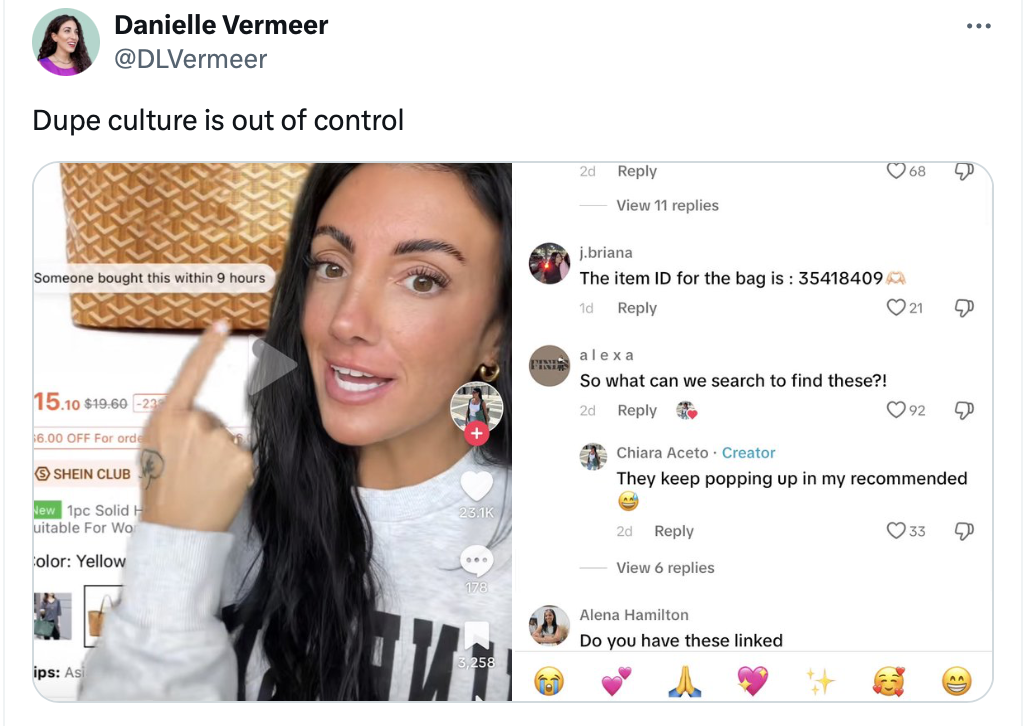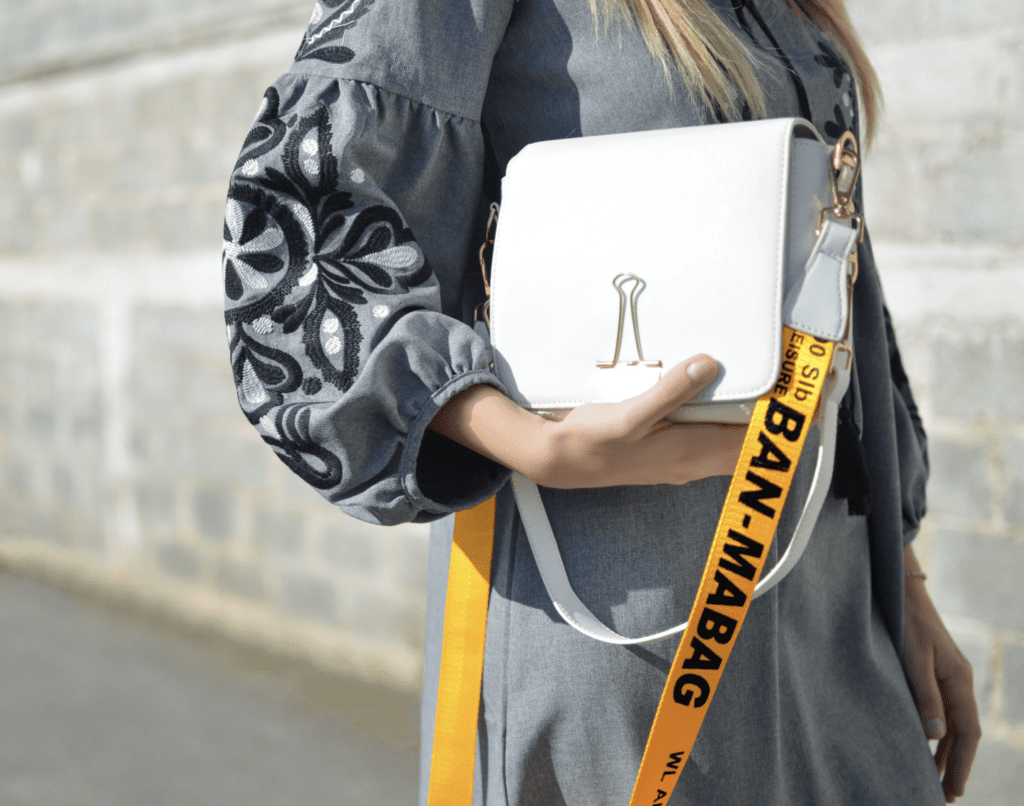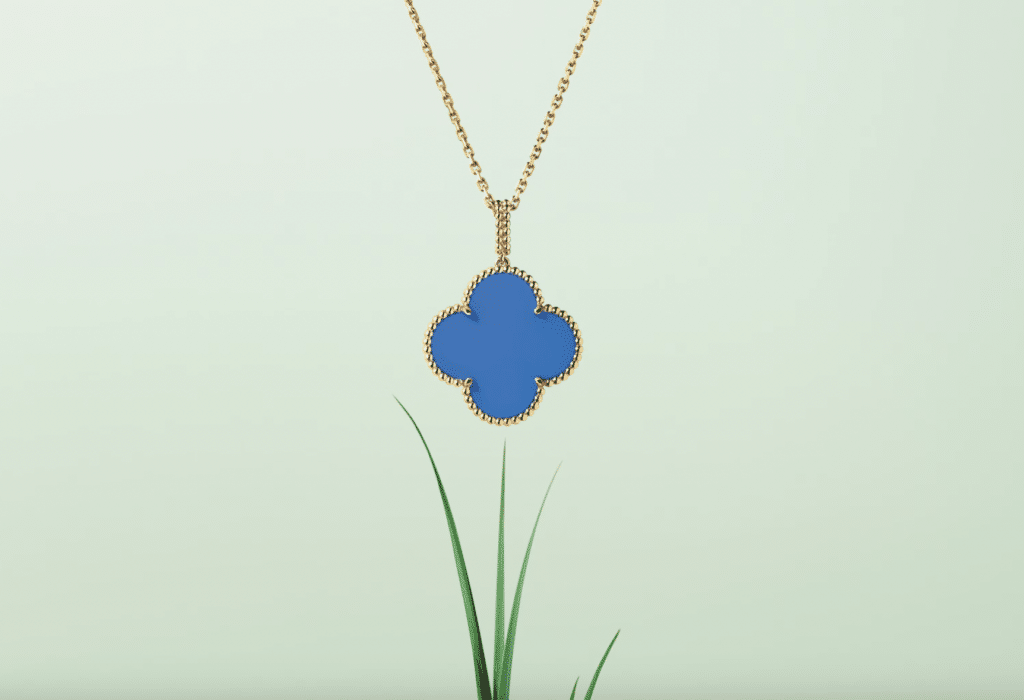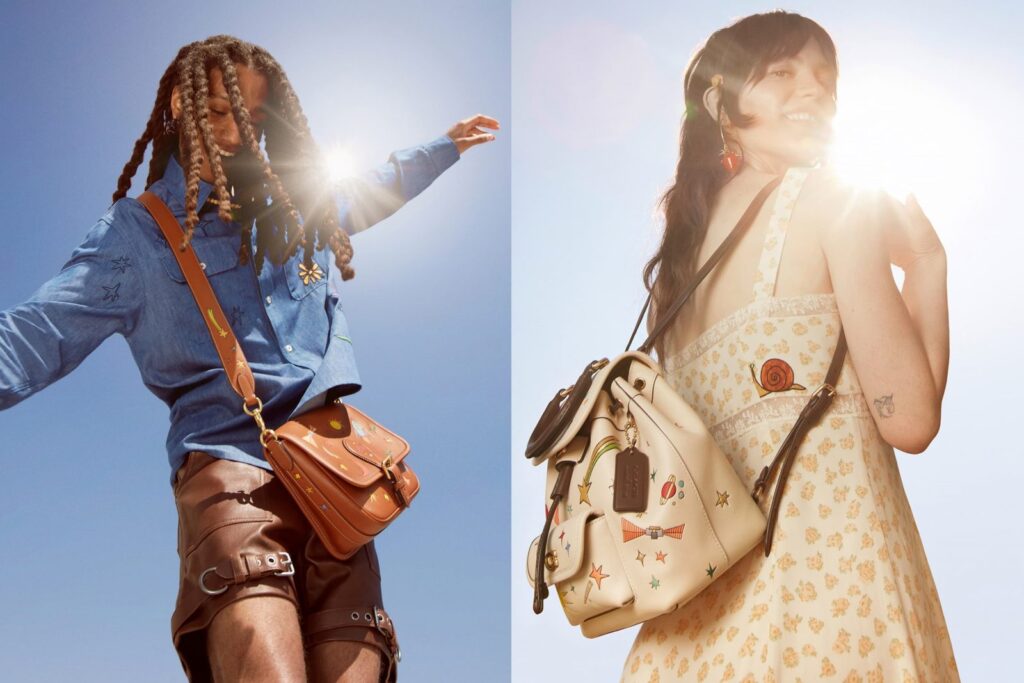Dupes may be more in-demand than ever. New data suggests that consumers are searching for “dupes” – a term that is being used to refer to lookalikes of hot-selling products sans brands’ well-known trademarks and counterfeits (or otherwise infringing goods), alike – with increased frequency. Reddit, for instance, recently revealed that it saw a 50 percent rise in views of dupe-focused communities – including r/fashionreps, r/reptime, r/replika, and r/designerreps, among others – from 2022 to 2023. This seems to be a clear nod to the fact that consumer interest in dupes is not waning following a surge in demand for affordable copycat products in recent years.
The Rise of Dupes
A few key factors have likely influenced the enduring demand for dupes, including a shift in mindset among younger consumers who have made it socially acceptable to buy and flaunt replicas. As TFL first reported back in 2021, in addition to opting for the legally-above-board type of “dupes” (i.e., those that consist of unbranded products that mirror designer wares), hordes of younger consumers are also happily snapping up counterfeit and/or infringing goods (i.e., those that make unauthorized use of others’ trademarks and/or trade dress) and referring to them as “dupes.”
In doing so, they are actively helping to chip away at the stigma traditionally associated with products that make use of others’ trademark-protected branding, product and/or packaging trade dress, design patent-protected ornamental elements, etc. This is distinct from the approach of “previous generations” of consumers, who tended to “shop for knockoffs on the sly,” Jennifer Baker, the growth marketing leader at Grin, a creator management platform, told the Guardian. Gen Z has “normalized” buying infringing “dupes,” she says.

At the same time, the role of e-commerce and social media – including the birth of an entire genre of influencers focused on identifying and promoting dupes – cannot be discounted in the meteoric rise of these products. Dupes are more accessible thanks to a wide range of marketplace sites, such as DHGate, Amazon, Etsy, etc., where consumers have been able to easily – and relatively discreetly – buy both lookalike products and counterfeit goods. But more than that, “The online culture of dupe shopping, accelerated by TikTok especially in the last few years, has flipped the script,” analyst Ellyn Briggs said in connection with a Morning Consult study on dupes.
TikTok has certainly proved fertile ground for the dupe movement. Videos on TikTok that bear the “dupe” hashtag, for example, have racked up nearly six billion views to date. And so-called “dupe influencers” have built sizable followings on the social media platform, where they have not only helped to popularize dupes by way of their promotion of these goods but have made these products easier to find by pointing their followers to specific dupes on e-commerce marketplaces – complete with links where they can be purchased. (If this sounds familiar, you may recall the since-settled lawsuit that Amazon filed against influencers Kelly Fitzpatrick and Sabrina Kelly-Krejci for allegedly to peddling “dupes” on Instagram, Facebook, TikTok, and their own websites.)
All the while, there are undeniable economic forces at play. “Any time a rise in demand for luxury goods coincides with economic turmoil,” which has been at play across the globe in recent years, “we see a rise [in demand for] replicas,” Rob Gaige, head of global insights at Reddit, told the Drum recently. Briggs said as much, as well, noting that when Morning Consult polled consumers on the reasons why they buy dupes, “Money was the top answer.”
How Brands are Reacting
Taken together, these factors – and others, such as the ever-rising sophistication of counterfeiting operations and a corresponding increase in the quality of fakes, such as “super fakes” – have spurred a movement that has dominated the retail landscape. As for how brands are responding, that depends in large part of the type of “dupe” at play. For those that replicate other companies’ trademarks and/or trade dress, the response is business as usual for companies’ counsels, who are rightfully treating these goods as counterfeit or otherwise infringing products.
The more interesting actions, of course, come in response to the type of “dupes” that aim to replica the overall look of a designer product without actually co-opting others’ trademarks or protected design elements. It is on this front that some brands are taking – or at the very least, being encouraged to take – a different kind of approach, one that sees them leaning into the dupe phenomenon.
Lululemon, for instance, made headlines last year when it hosted an event in furtherance of which consumers could trade in their dupes of its popular Align leggings for the real thing. “It felt like a very fun way to step into a cultural conversation,” Lululemon chief brand officer, Nikki Neuburger, said of the initiative. And the gamble worked, according to the Guardian, as it enabled Lululemon to gain access to new consumer; 50 percent of the 1,000-plus people who attended the “dupe swap” in Los Angeles last year were new customers.
Given that dupes do not appear to be going away any time soon, brands are being encouraged to make the most of them. “Brands are going to have to start playing with this a little bit more,” Stevie Johnson, the managing director of influencer marketing agency Disrupt, said recently. “If they do, they can attract new customers that might not have initially come to them without the attention raised by the dupe.”











